The Heersink School of Medicine Office of Diversity and Inclusion Asian American and Pacific Islander (AAPI) Faculty Association celebrated AAPI Heritage Month with a special educational event. Attendees had the opportunity to learn about various Asian and Pacific Islander cultures through food, traditional dance, music, art, and engaging speakers. The event showcased several exhibits and performances and presented a unique opportunity for attendees to learn about things they may encounter daily, each of which are rooted in AAPI culture.

The Jamine Ensamble
Elegance and beauty is embodied by the Jasmine Ensemble. Founded in 2008, this group performs traditional dance and Chinese Dulcimer Ensembles.
During the show, attendees witnessed the grace and artistry of the Elegant Jasmin dance. After the performance, dancers were available to talk, ask questions, and participate in exhibits with other artists.
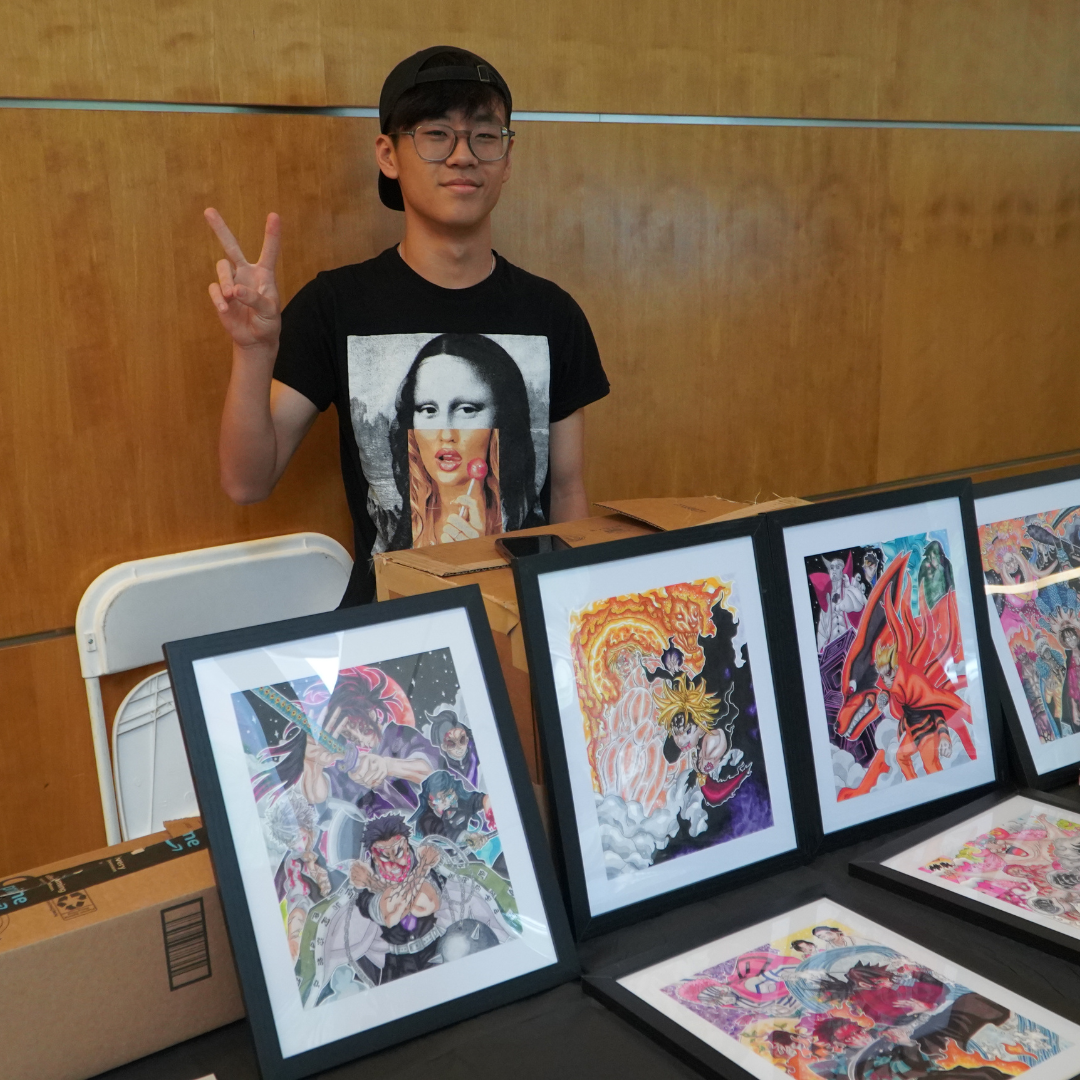
Anime
The world of modern anime and manga dates back to 1956. These illustrations are a style of drawing that often includes cultural references to Japan.
Elijah Kim—a high school student and son of Harrison Kim, Ph.D., MBA, Professor in the Division of Advanced Medical Imaging Research—is a skilled anime artist that showcased his artwork at the AAPI Heritage Month Celebration. Elijah shared that his creative process often comes from finding inspiration in the anime books he reads.
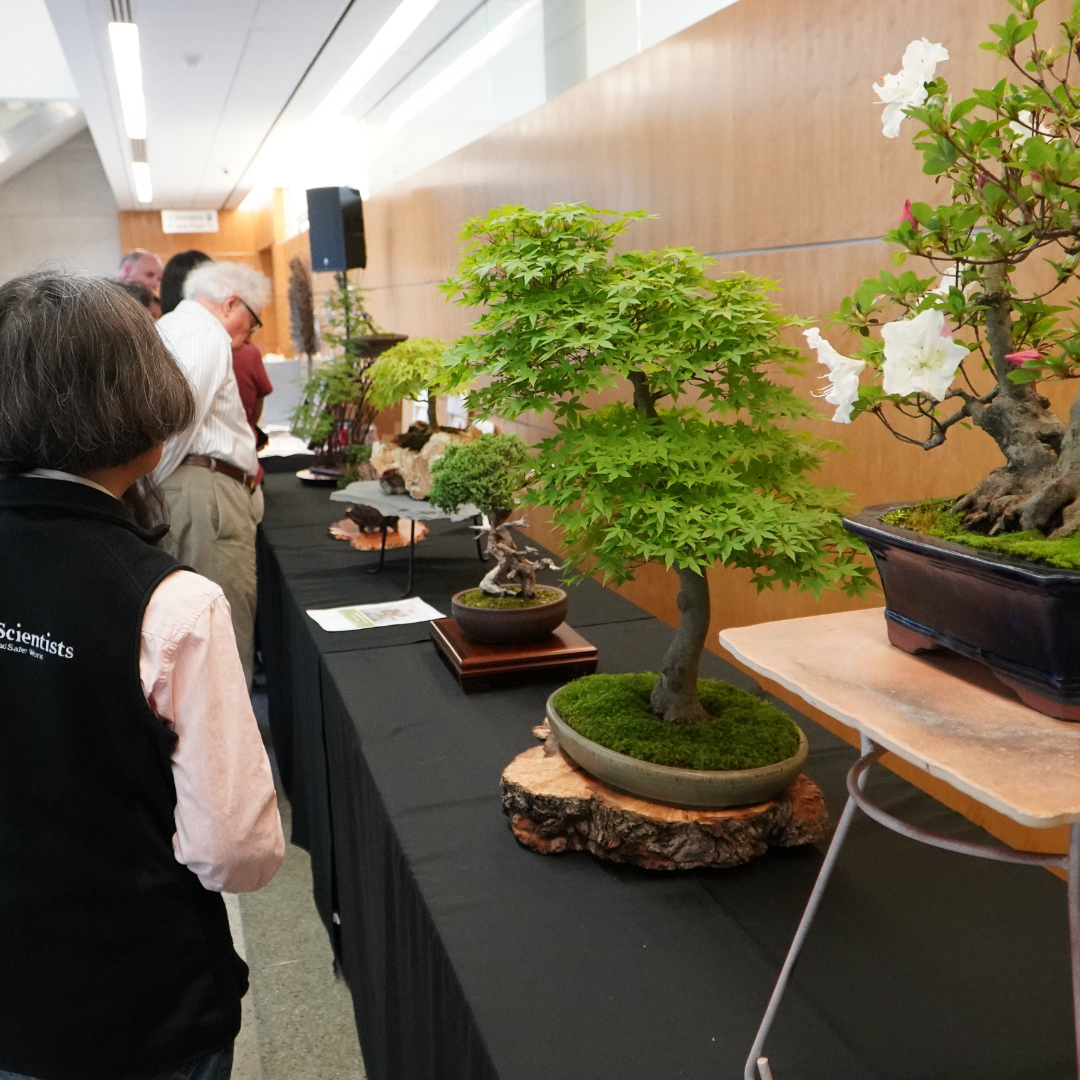
Bonsai
While some may be under the impression that Bonsai is a type of tree, Mr. Unkenholz of the Alabama Bonsai Society, informed event attendees that these miniature trees are actually regular plants—cultivated and trained to stay small. The technique, comes from the artist’s propagating skills and ability to use the planter, stand, and other accessories to transport the viewer to slice-of-life moments found in nature.
According to the Birmingham Botanical Gardens, Bonsai is rooted in ancient China. Though its exact origin date is unknown, Bonsai has become a loved hobby by many.
Mr. Unkenholz of the Alabama Bonsai Society shared his passion for this art form and provided information on the careful cultivation of these miniature trees
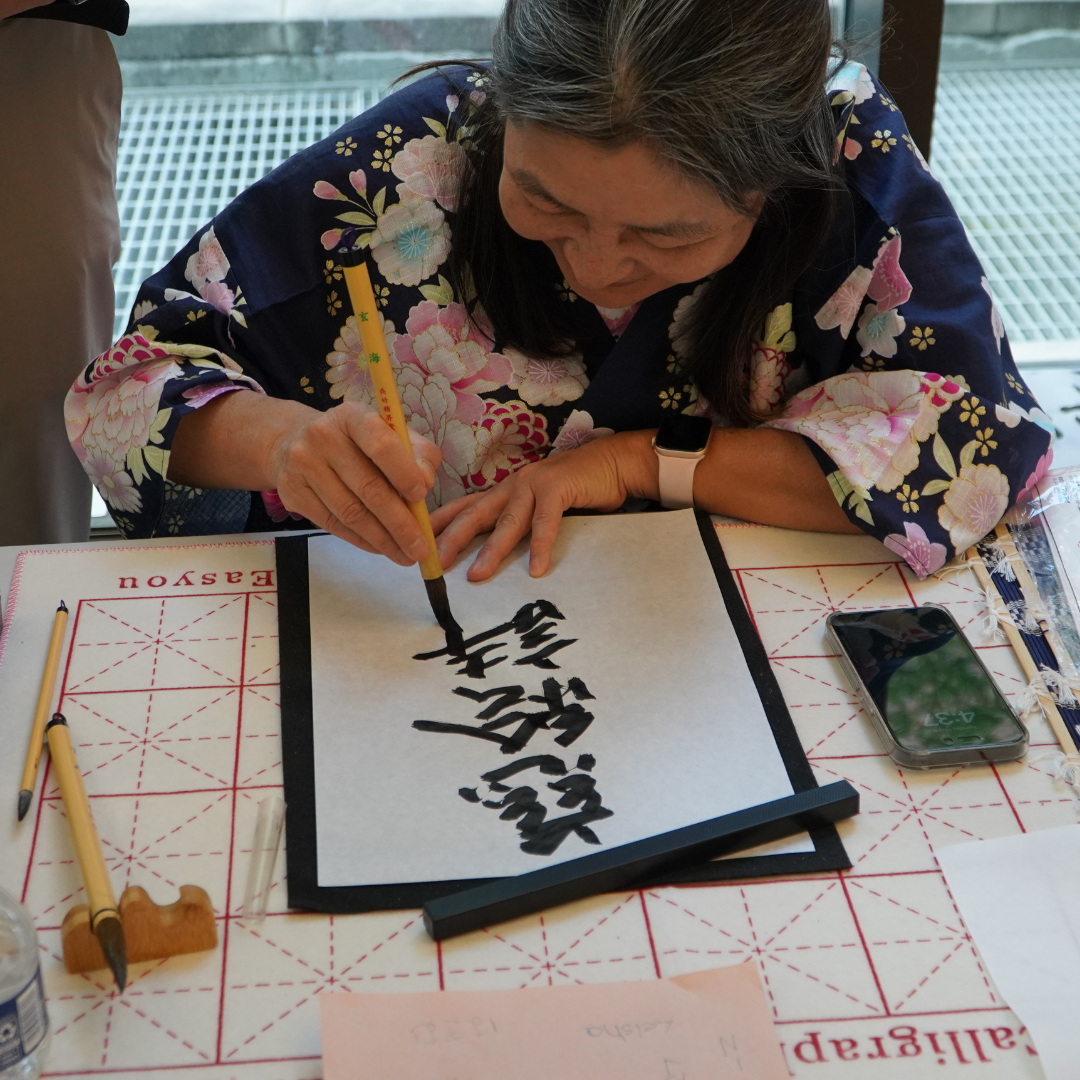
Japanese Calligraphy
Kanji, otherwise known as Japanese calligraphy, is an artform that has been practiced over generations. Heersink School of Medicine’s own, Dr. Shuko Harada, has been practicing calligraphy since elementary school.
According to Japan Guide, a calligraphy set—which generally consists of Shitajiki (soft mat), Bunchin (weight), Hanshi (thin paper), Fude (brush), Suzuri (ink containcer), and Sumi (combined with water to create ink)—helps Dr. Harada and others create beautiful characters.
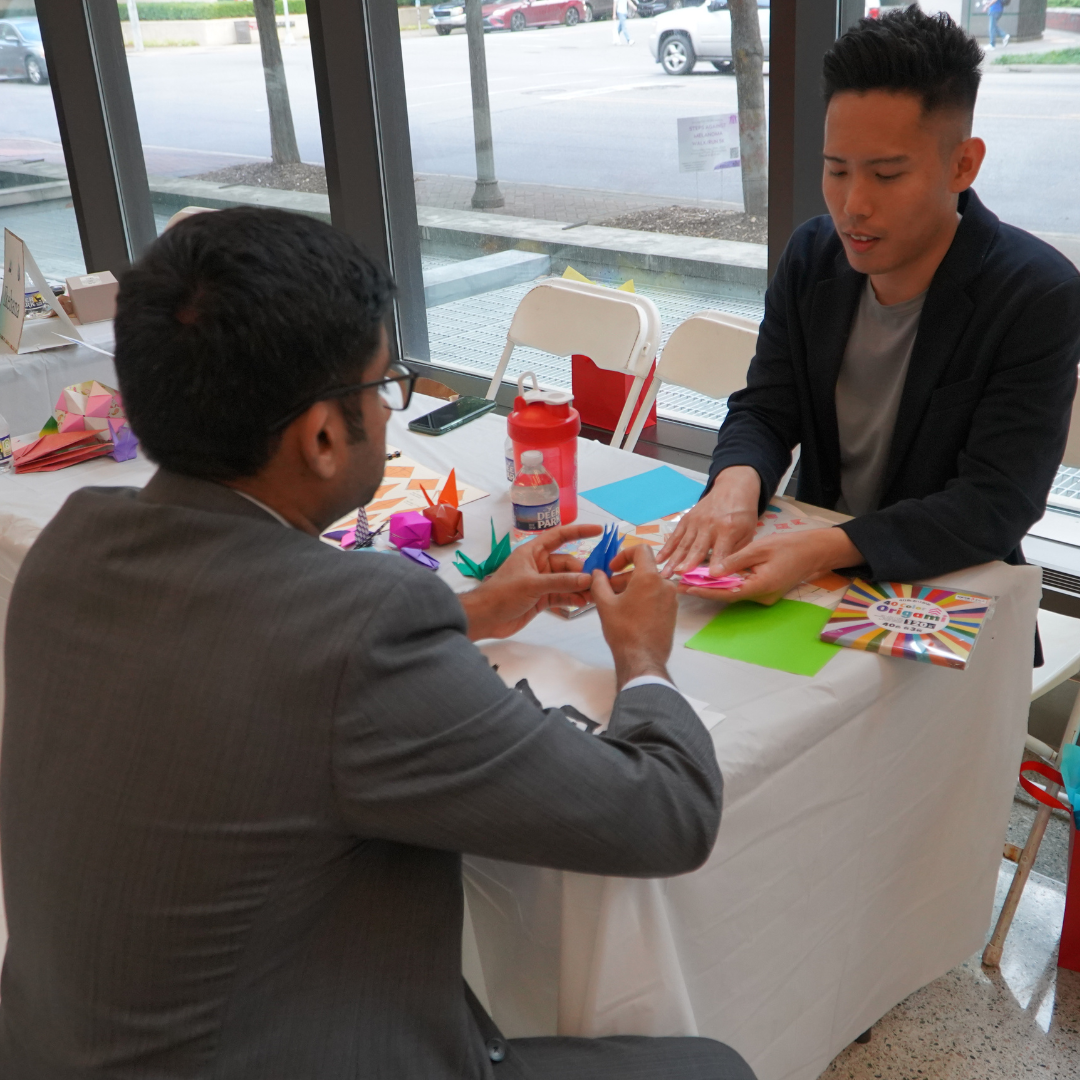
Origami
Many researchers have claimed the origin of origami—also known as the art of paper folding—to be Japan, while others say it can be traced to China as far back as the 1400s (Britannica).
Yoshiyuki Hara, PhD, Assistant Professor of Japanese in the UAB College of Arts a Sciences, understands the skillful nature, artistry, and craft of origami. During the AAPI Heritage Month celebration, Hara and Rio Nunley of the Japan America Society of Alabama, provided a hands-on origami experience to attendees. They provided step-by-step instructions for creating various origami shapes and offered insights into the history and cultural significance of this art form.
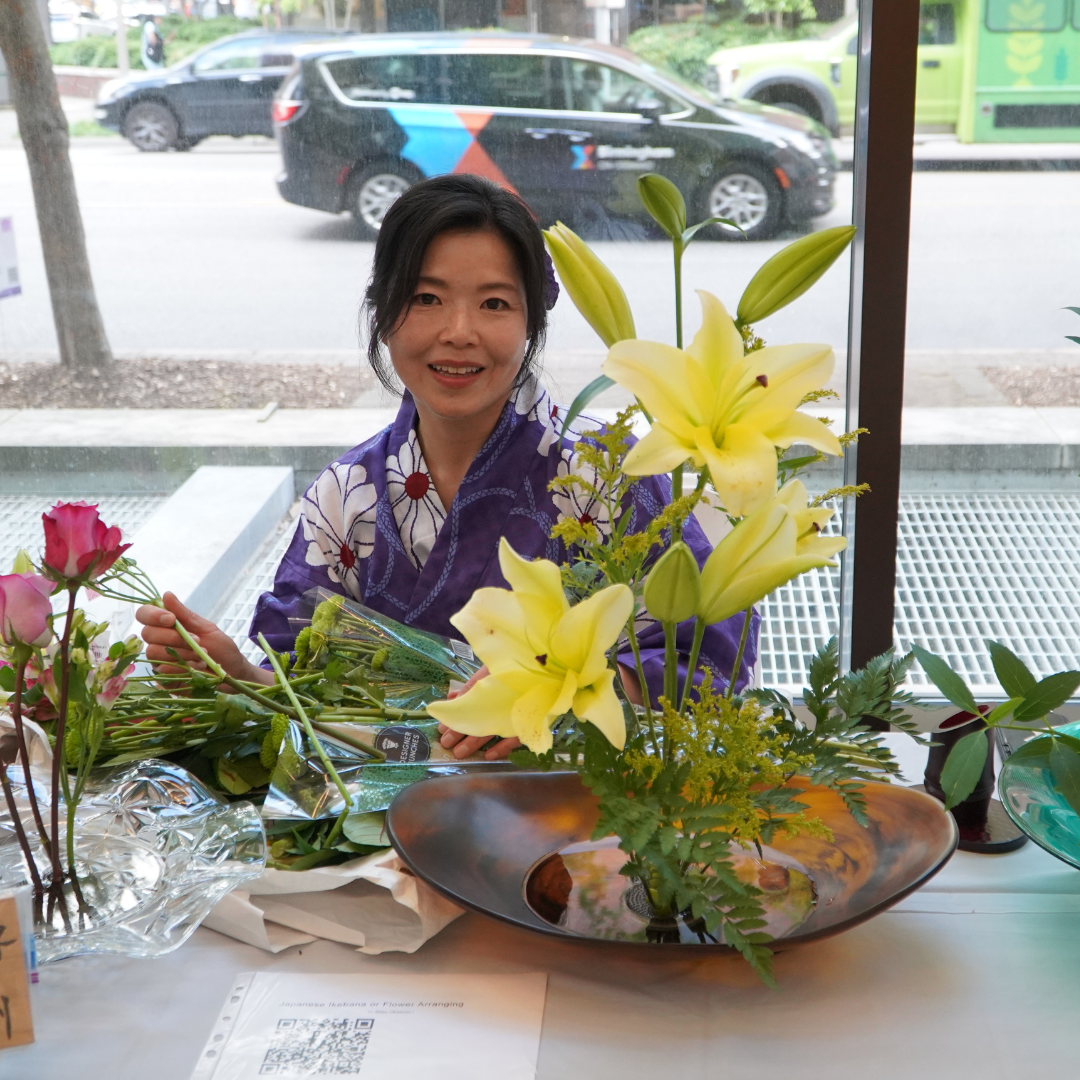
Ikebana
Ikebana, the Japanese art of arranging flowers, has been used for centuries. To create an arrangement, the artist carefully chooses each stem and includes pieces that evoke emotion. This practice creates a minimal, yet intentional, final arrangement. Miki Jinno, a Research Associate at the Heersink School of Medicine, has been practicing ikebana since elementary school. During the event, she carefully crafted arrangements that allowed guests to witness the beauty and simplicity of ikebana.
Other highlights of the event:
 Warner Huh M.D., FACOG, FACS (pictured left) and Herb Chen M.D., FACS (right)Co-leaders of the AAPI Faculty Association, Herb Chen M.D., FACS and Warner Huh M.D., FACOG, FACS, welcomed and thanked the audience. Chen and Huh—both accomplished professionals in the medical field—with Chen serving as the Chairman of Surgery at the University of Alabama at Birmingham (UAB) and Huh as the Chair of the Department of Obstetrics and Gynecology at UAB, set the tone for the event and highlighted the significance of
Warner Huh M.D., FACOG, FACS (pictured left) and Herb Chen M.D., FACS (right)Co-leaders of the AAPI Faculty Association, Herb Chen M.D., FACS and Warner Huh M.D., FACOG, FACS, welcomed and thanked the audience. Chen and Huh—both accomplished professionals in the medical field—with Chen serving as the Chairman of Surgery at the University of Alabama at Birmingham (UAB) and Huh as the Chair of the Department of Obstetrics and Gynecology at UAB, set the tone for the event and highlighted the significance of 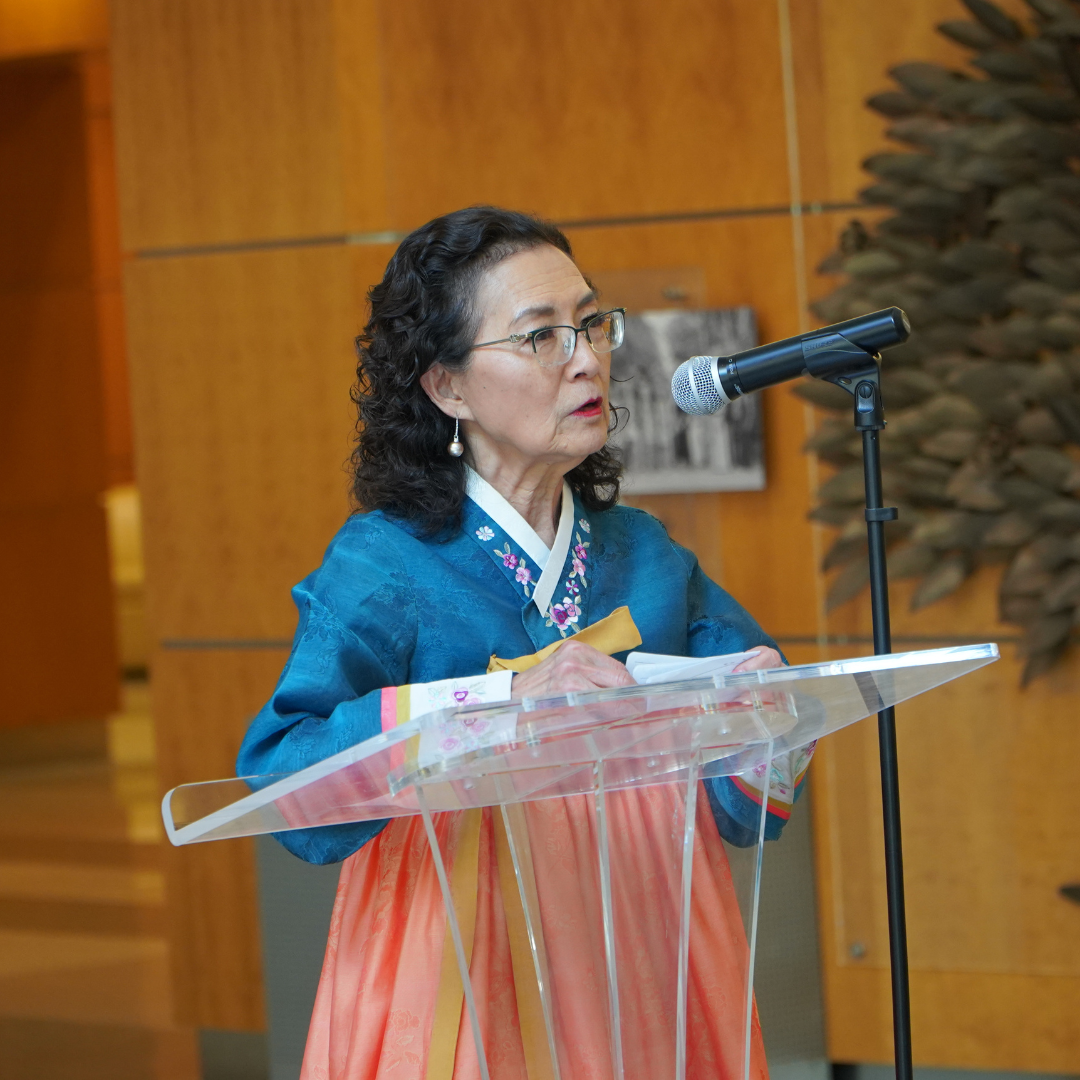 Helen KimAAPI’s presence and leadership in medicine.
Helen KimAAPI’s presence and leadership in medicine.
Helen Kim, the Executive Director of the Alabama Asian Cultures Foundation, gave a thought-provoking introduction to AAPI Month. She recognized a few prominent AAPI members in various walks of life—ranging from sports to academia—and acknowledged the challenges that AAPI individuals have faced throughout history. Kim emphasized that AAPI Month is an opportunity to honor and celebrate the unique and diverse experiences of AAPI communities across the United States.